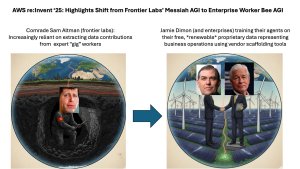The convergence of AI adoption, distributed development, and mounting delivery pressures is impacting how organizations approach developer environments. Teams are being asked to move faster while tightening governance and lowering costs, a combination that exposes inefficiencies in traditional setups.
At theCUBE Research, our analysis shows a rising industry imperative where modern developer environments must be ephemeral, reproducible, and governed by design. Without this foundation, organizations are likely to accumulate setup debt that erodes developer productivity, undermines compliance, and blocks innovation.
Is Setup Debt a Drag or a Strategic Risk?
According to theCUBE Research:
- 55.3% of organizations admit to at least some inconsistency between stage, test, and production environments.
- 41.1% still rely on manual processes for environment configuration, despite broad adoption of Infrastructure-as-Code.
- 34% of developers cite compliance overhead as a barrier to DevSecOps maturity.
While environment sprawl may seem like a tactical inefficiency, its consequences run deeper. Setup debt compounds over time, draining cycles on onboarding, dependency troubleshooting, and environment drift. Developers spend less time building features and more time firefighting, which is an unsustainable cost at scale.
The Rise of Governed, Ephemeral Workspaces
Ephemeral environments (provisioned on demand, standardized, and terminated when no longer needed) are emerging as a critical enabler of speed and security. By embedding governance directly into the workspace, organizations are addressing three key challenges:
- AI Agent Oversight: With 73% of developers reporting productivity gains from AI tools, guardrails such as sandbox testing and role-based access are ensuring compliance without slowing experimentation.
- Cost Alignment: On-demand provisioning prevents idle resources from draining budgets, while proximity deployment reduces latency by placing environments closer to dependent data and services.
- Operational Consistency: Reproducible templates and integrated CI/CD pipelines reduce drift across distributed teams, strengthening confidence in test results and production reliability.
These practices shift organizations from reactive maintenance toward proactive innovation. The environment itself becomes a platform for both productivity and compliance.
Why This Matters
Today’s developers are operating in an environment of heightened complexity. They must deliver value quickly while contending with distributed architectures, AI-driven workflows, and escalating compliance demands. Traditional models (e.g., overbuilt hardware, siloed IDEs, and manually configured workspaces) cannot keep pace.
Setup debt is not only a drag on productivity but a competitive liability. Organizations that fail to modernize environments risk developer attrition, compliance failures, and stalled AI adoption.
From our research across enterprise development teams, we find that reproducible, governed environments are no longer optional. They are the baseline for resilience in the AI-driven era.
The Case for Coder
Coder directly addresses this industry pivot by operationalizing environment-as-a-service. The platform enables:
- Ephemeral workspaces that launch in seconds, preconfigured with toolchains and dependencies.
- IDE flexibility to support both local integrations (VS Code, JetBrains) and browser-based workflows.
- Governed AI experimentation with isolated sandboxes and enforced compliance checks.
- Integrated CI/CD pipelines for accelerating release cycles and reducing manual errors.
Rather than layering governance on top of existing friction, Coder bakes it into the environment itself. This integration gives organizations a path to scale AI adoption responsibly while aligning infrastructure consumption with actual developer activity.
Recommendations for IT Leaders
Based on our analysis and industry practices, theCUBE Research recommends:
- Eliminate Setup Debt: Standardize environments through Infrastructure-as-Code and reproducible templates.
- Govern AI at the Workspace Level: Embed compliance policies directly into development workflows.
- Adopt Ephemeral Infrastructure: Move from always-on resources to on-demand, auto-scaling environments.
- Bring Environments Closer to Dependencies: Reduce latency and cost by deploying near data, services, or edge locations.
- Operationalize Environment-as-a-Service: Treat environments as strategic assets, not tactical afterthoughts.
Next Steps
Enterprise development is at a turning point. Setup debt, environment drift, and unmanaged AI tools are strategic risks that can stall innovation.
Coder’s report, Secure Environments for Developers and Their Agents, offers a roadmap to address these pressures with governed, reproducible, and cost-optimized environments.
Download the full report here to learn how your organization can eliminate setup debt, govern AI adoption, and unlock developer productivity at scale.
IT leaders should be focused on aligning speed, security, and scale while transforming developer environments from bottlenecks into engines of innovation.



